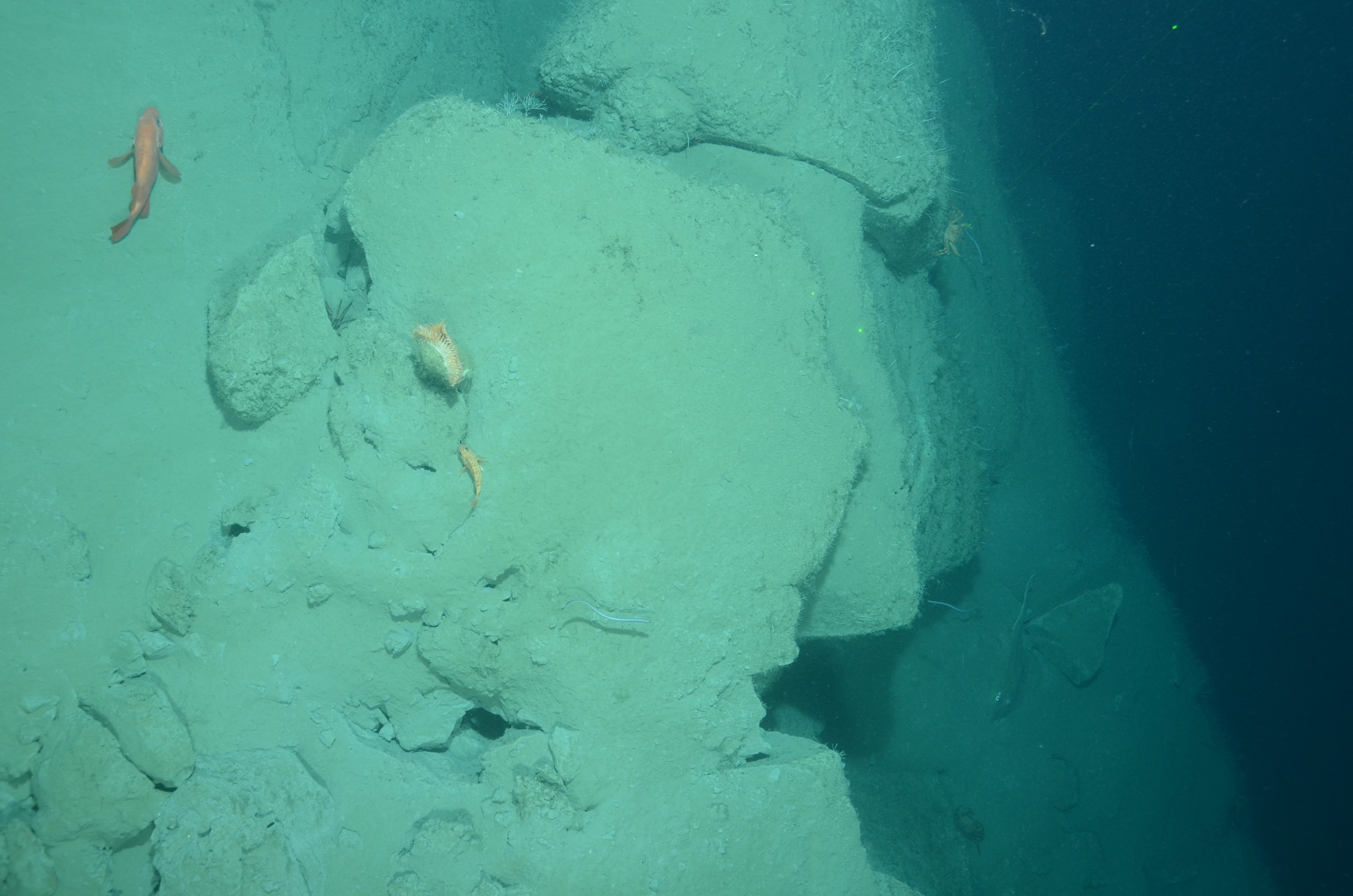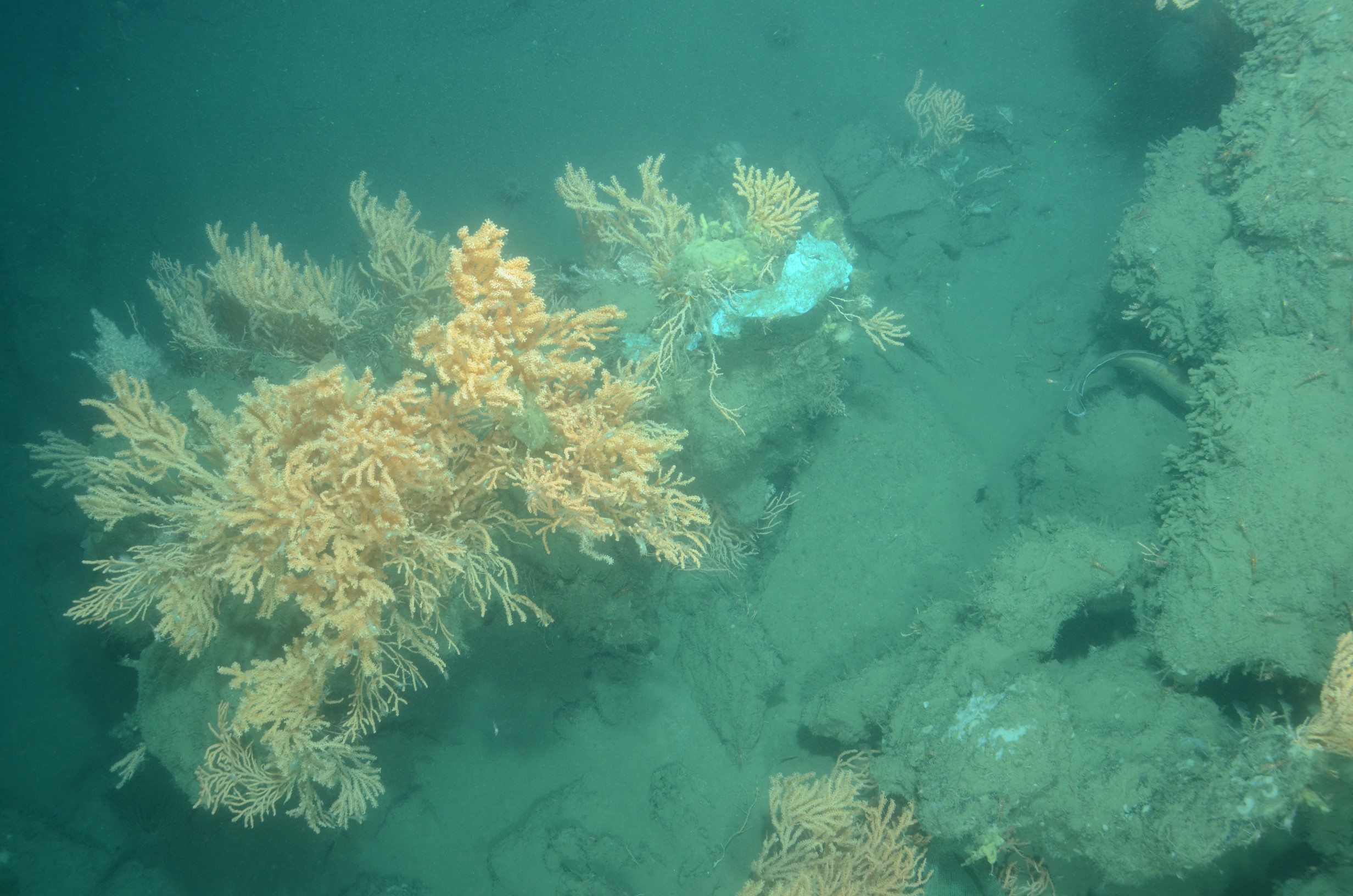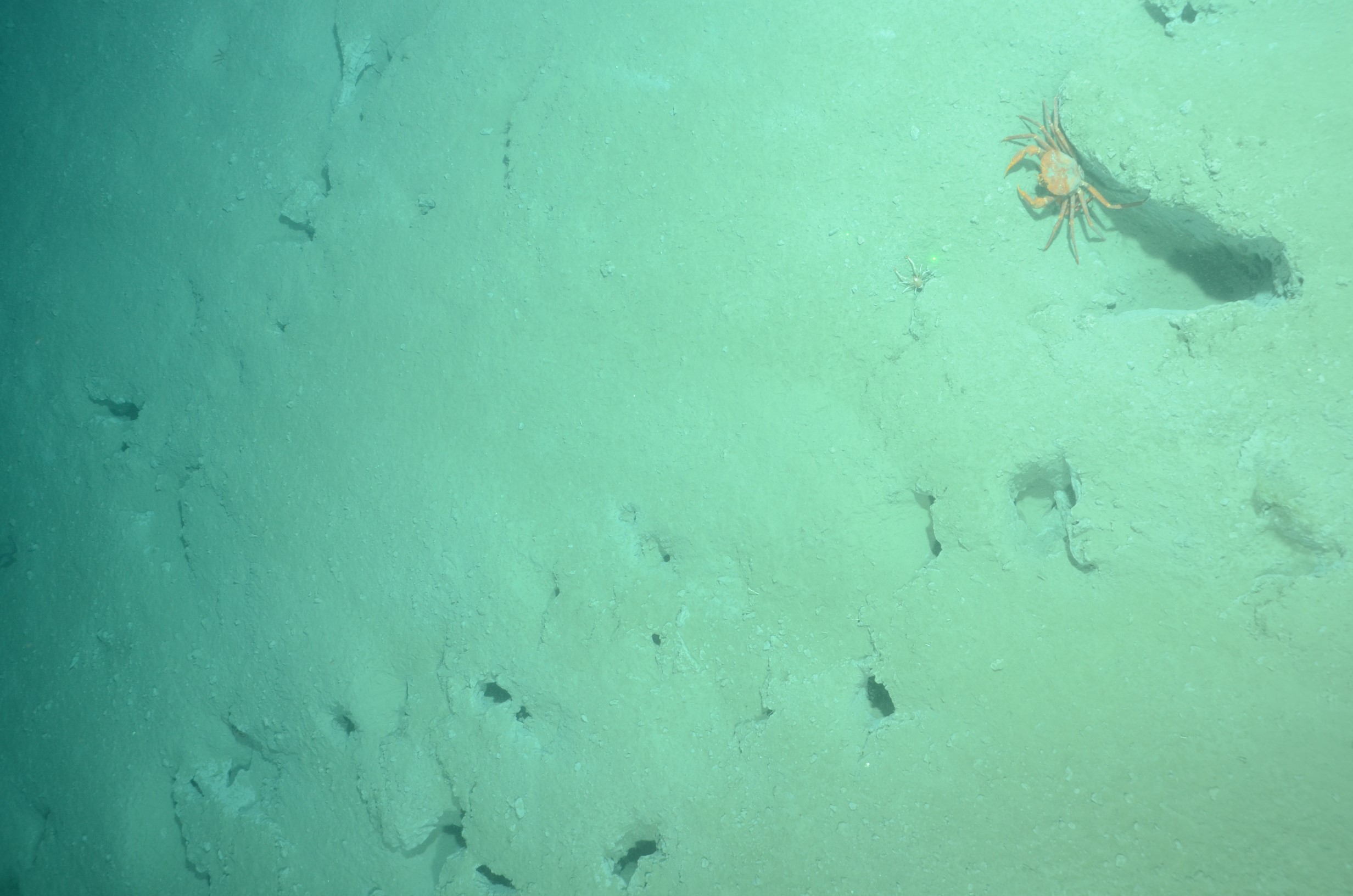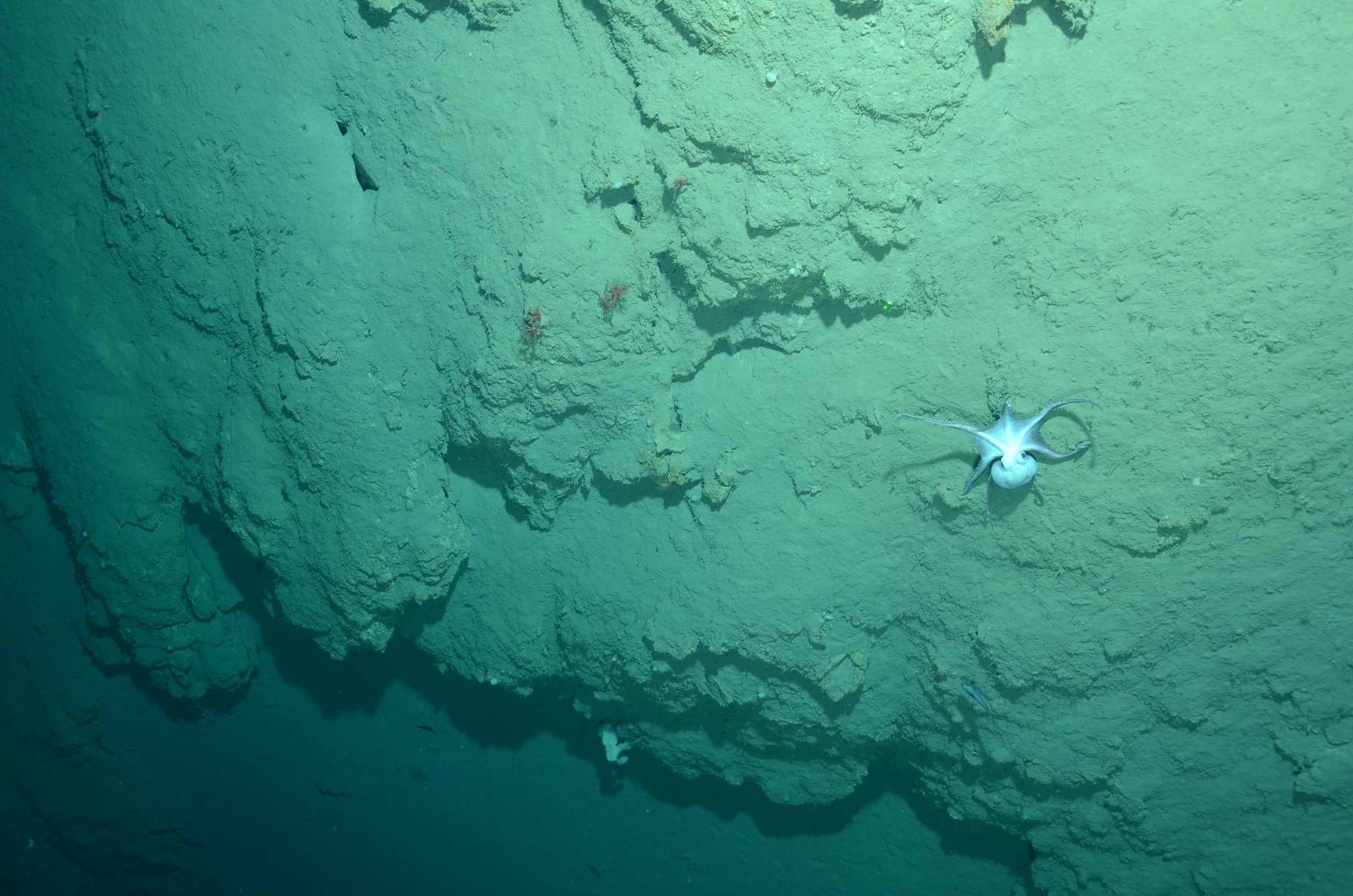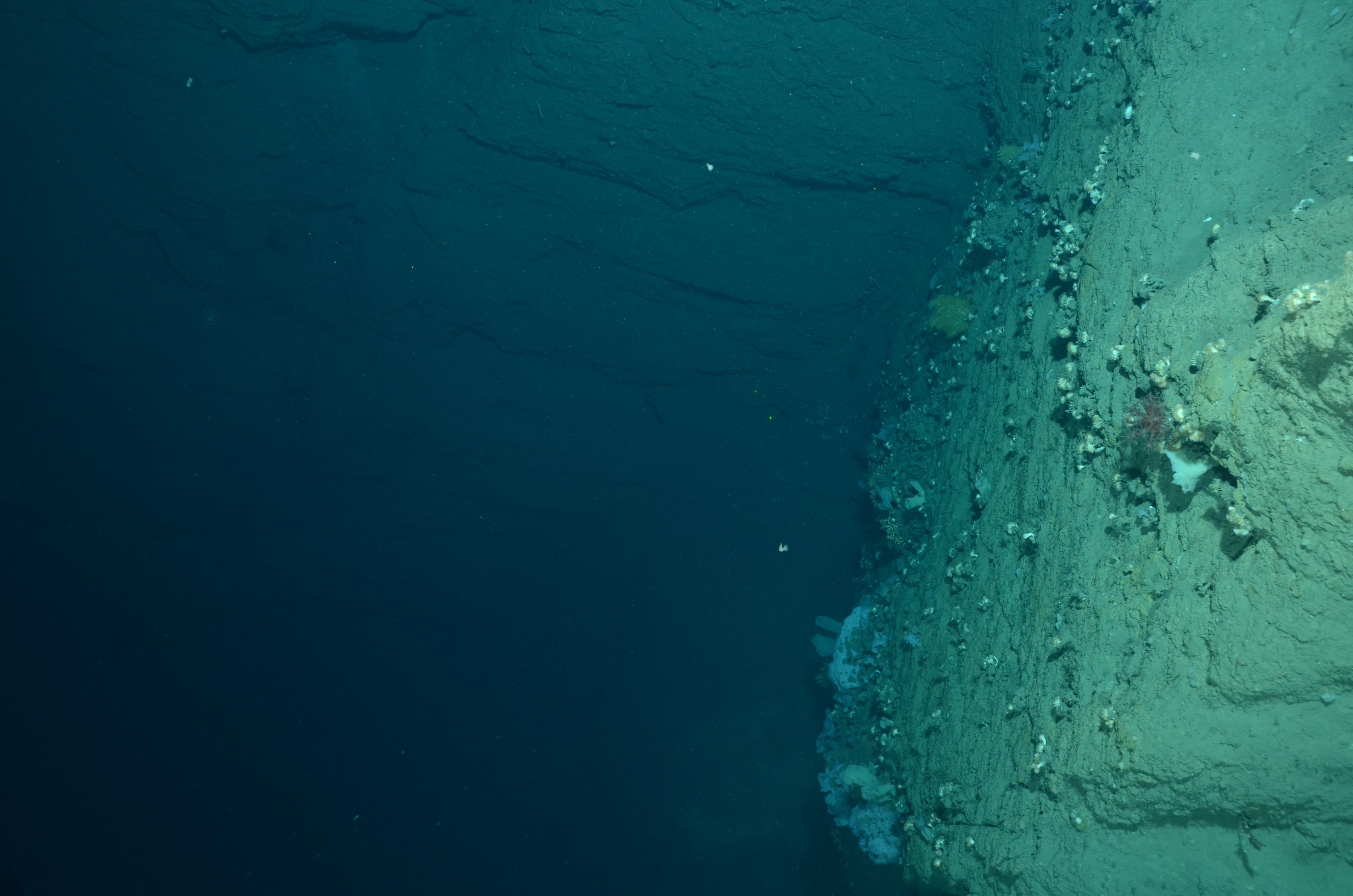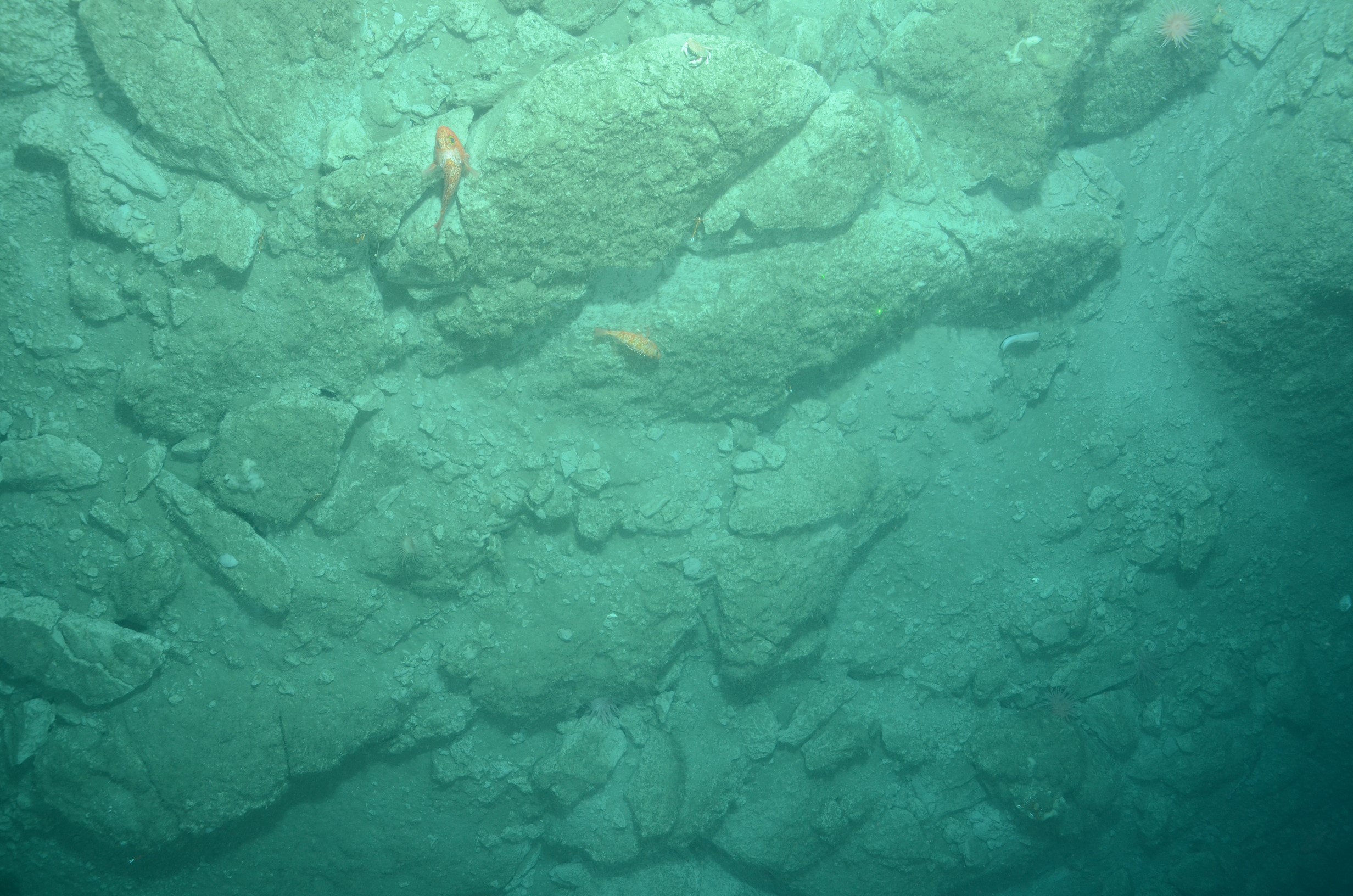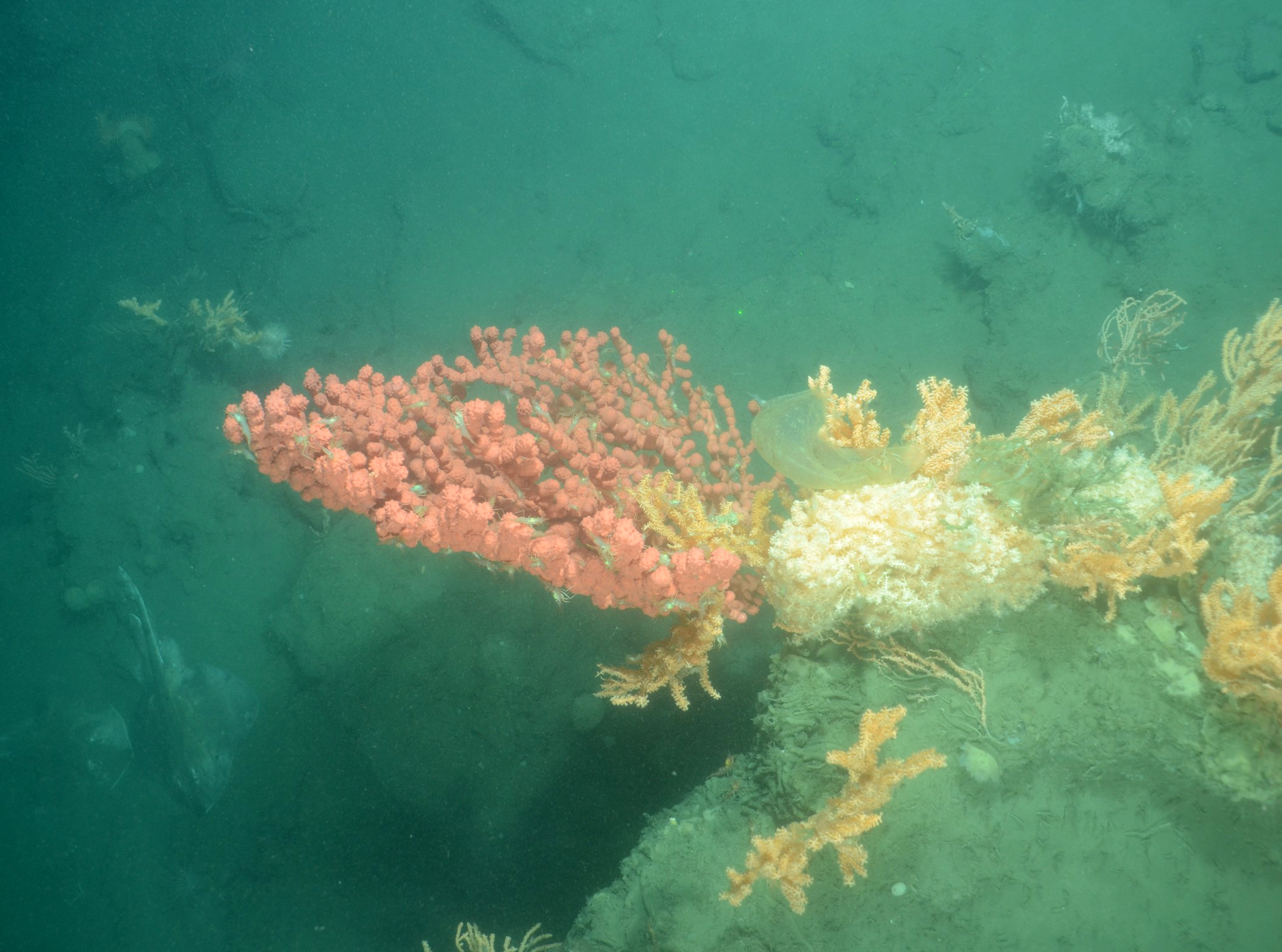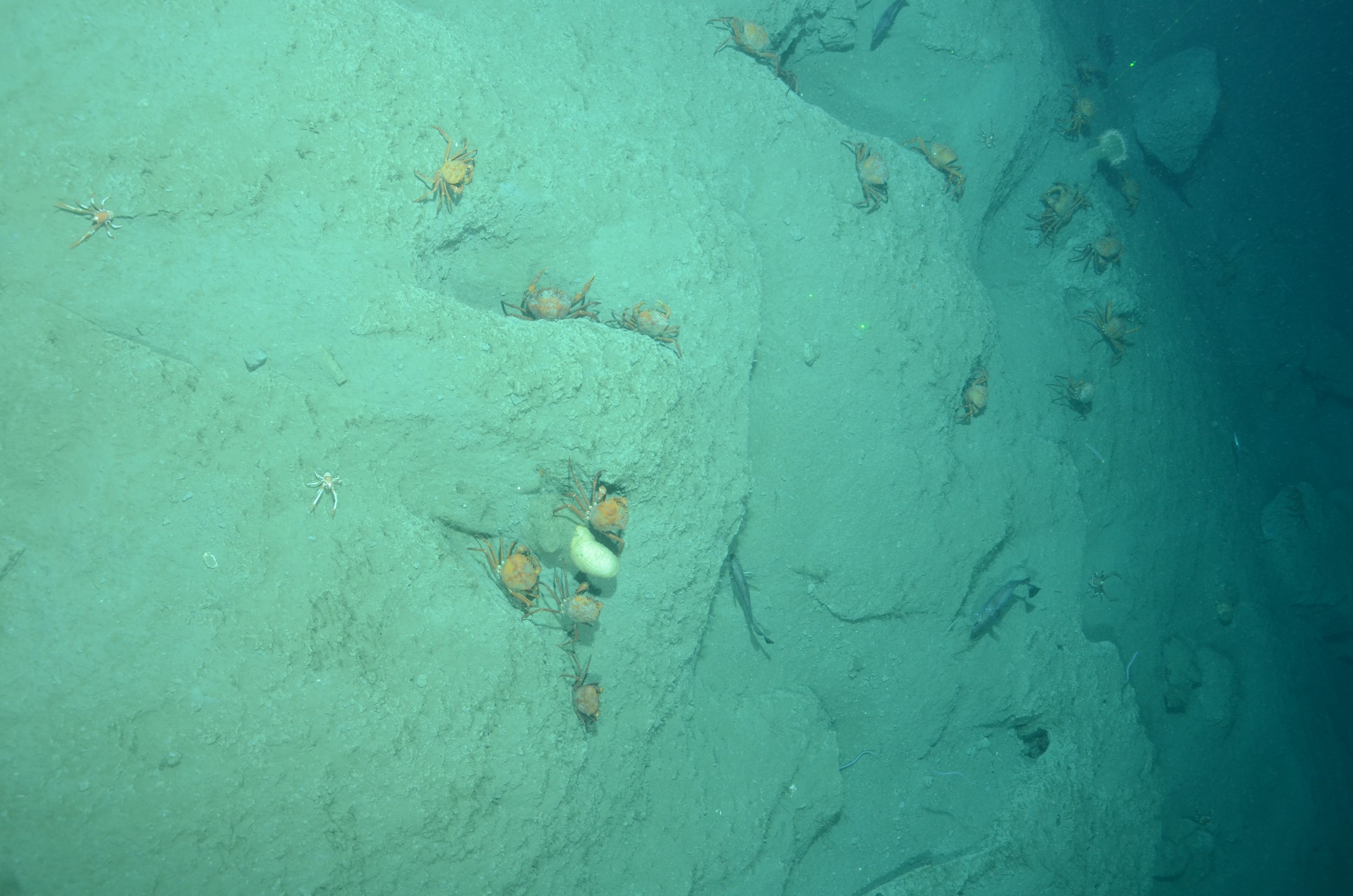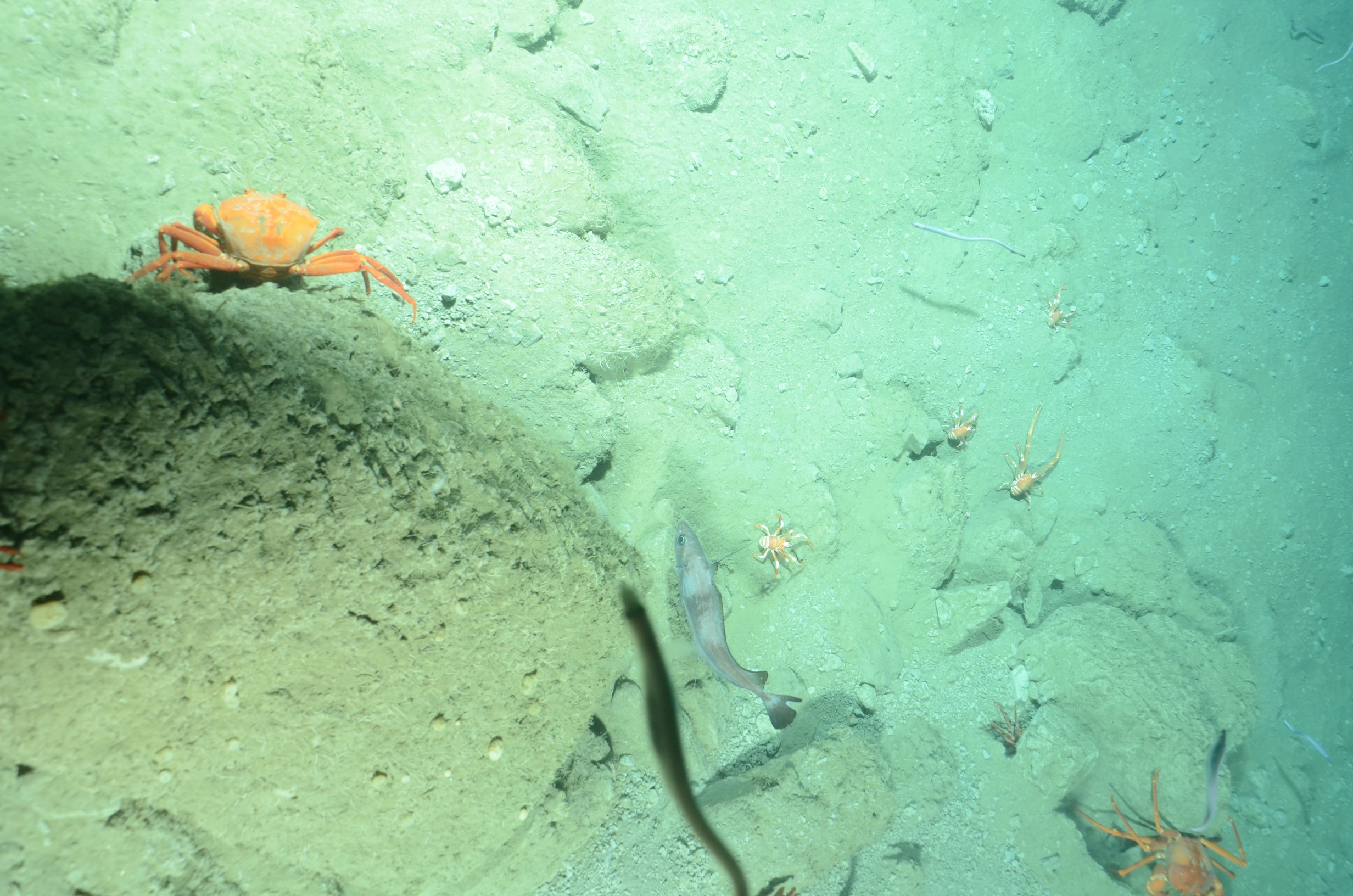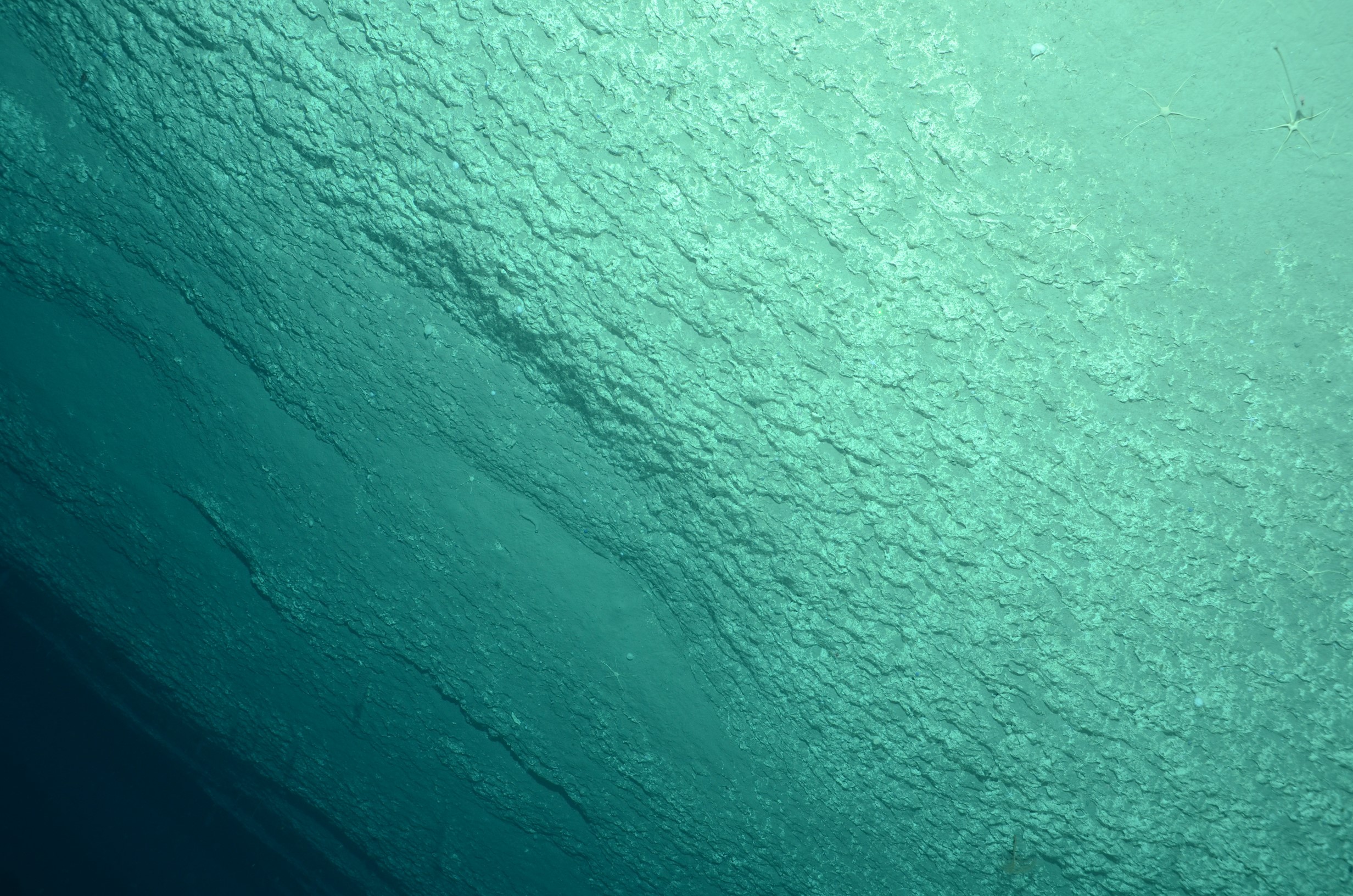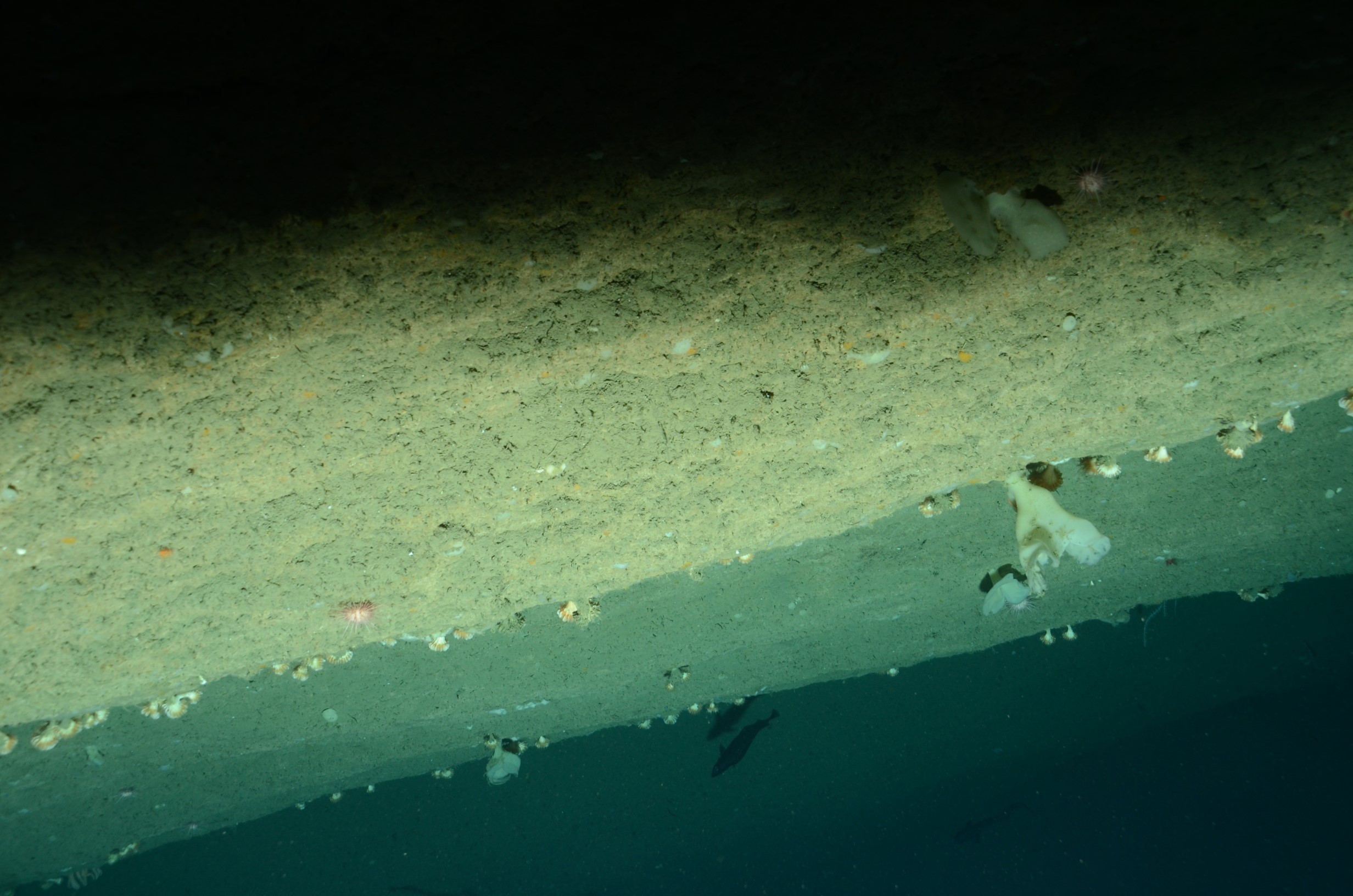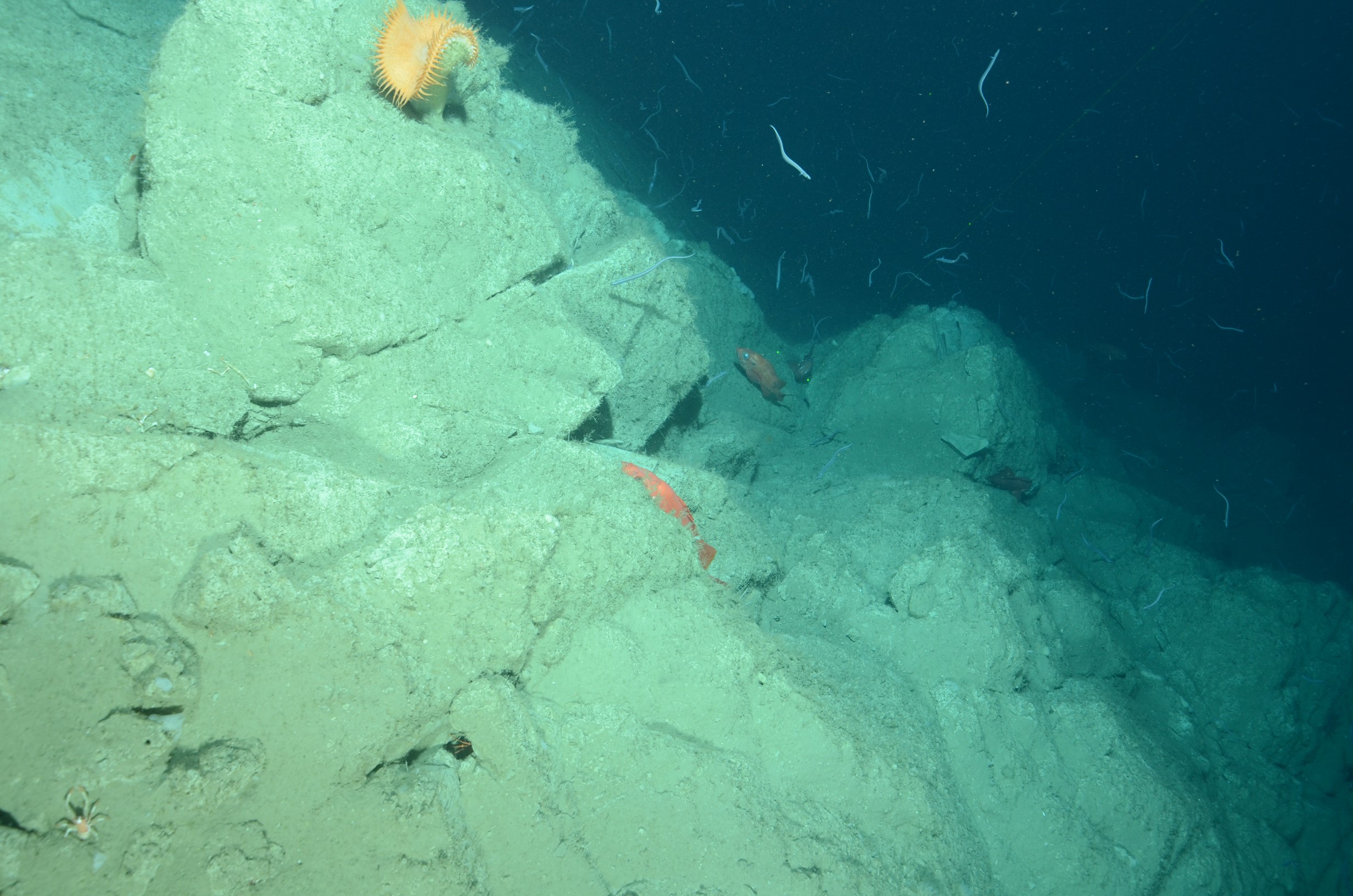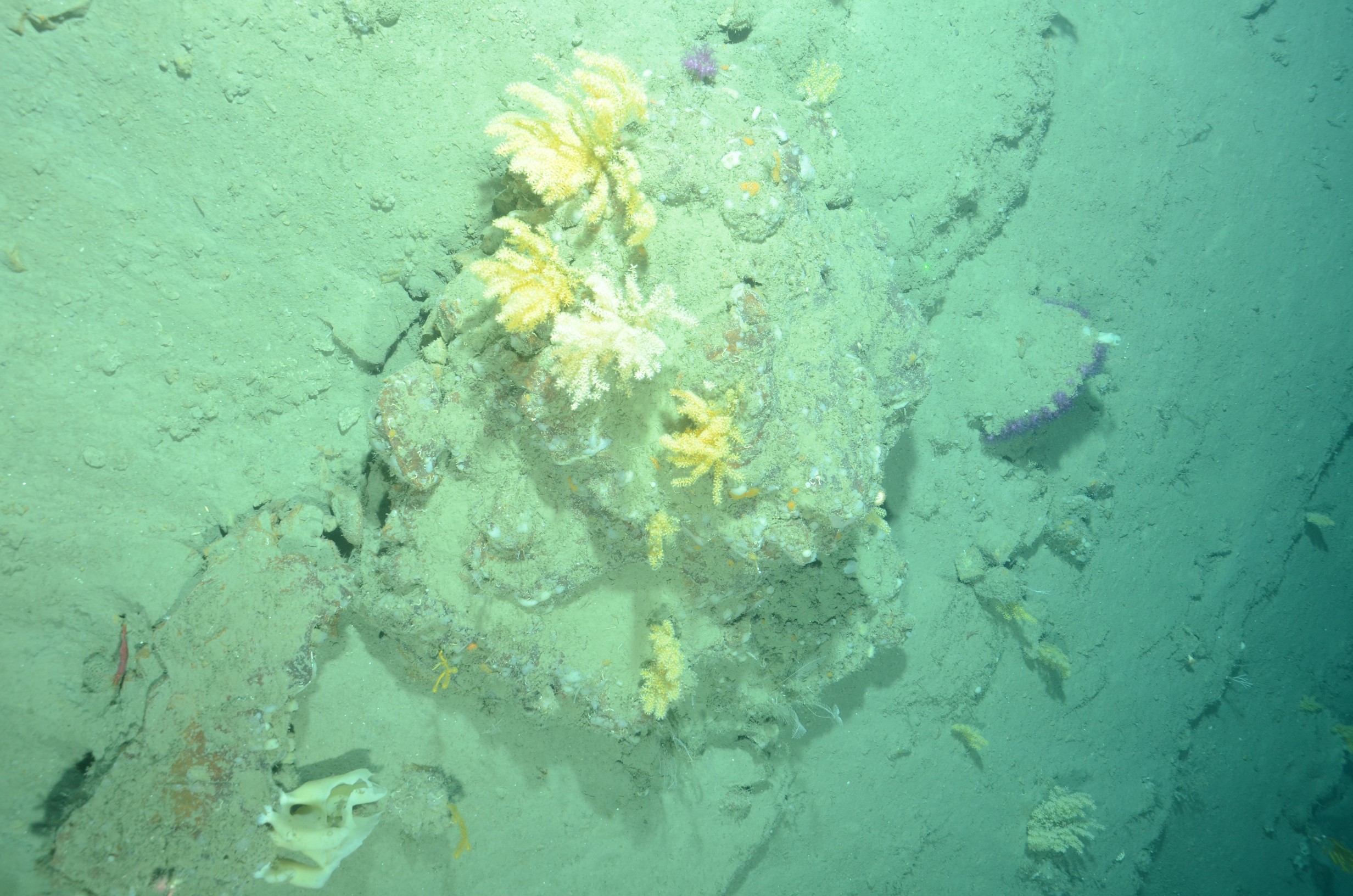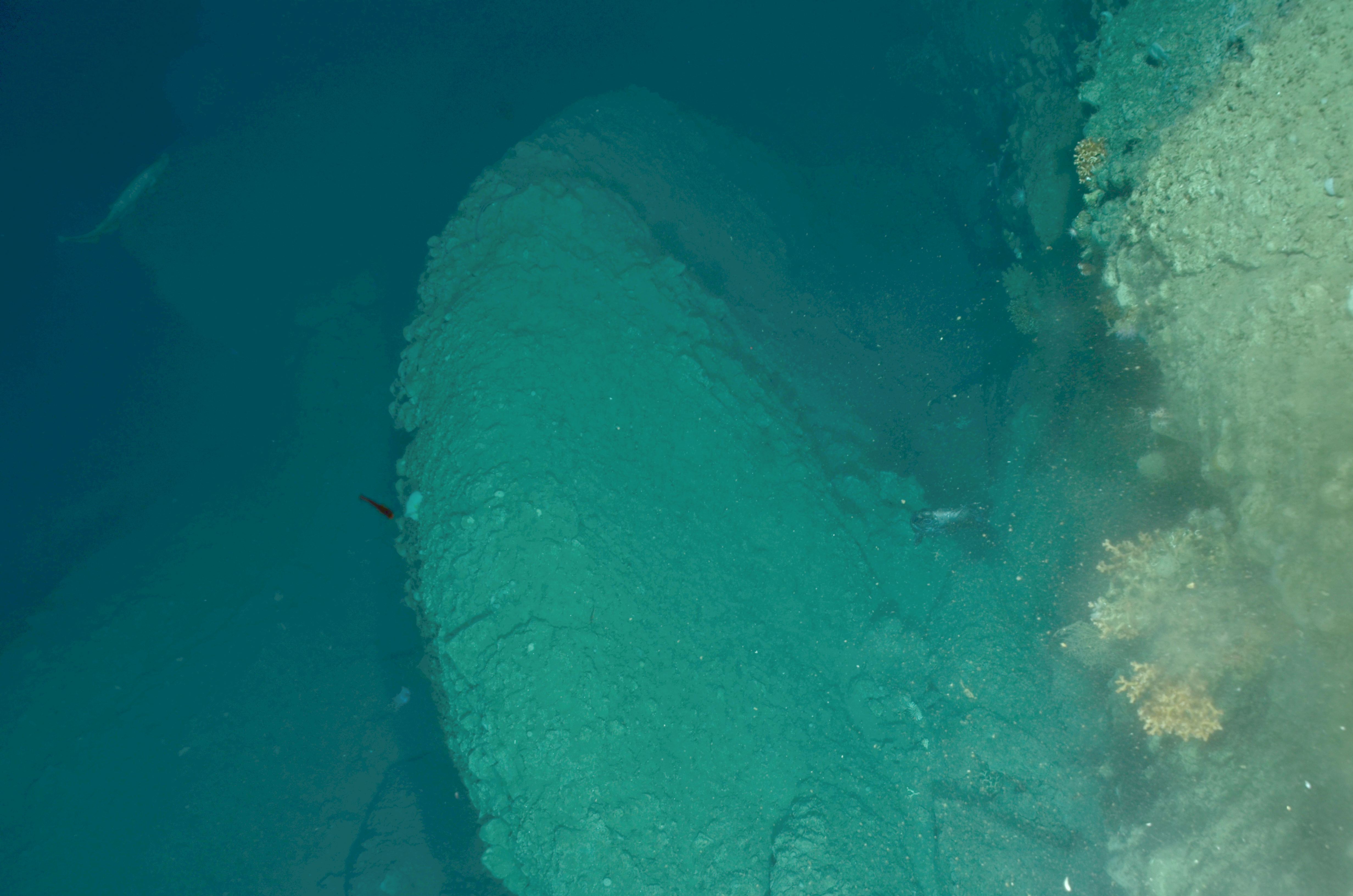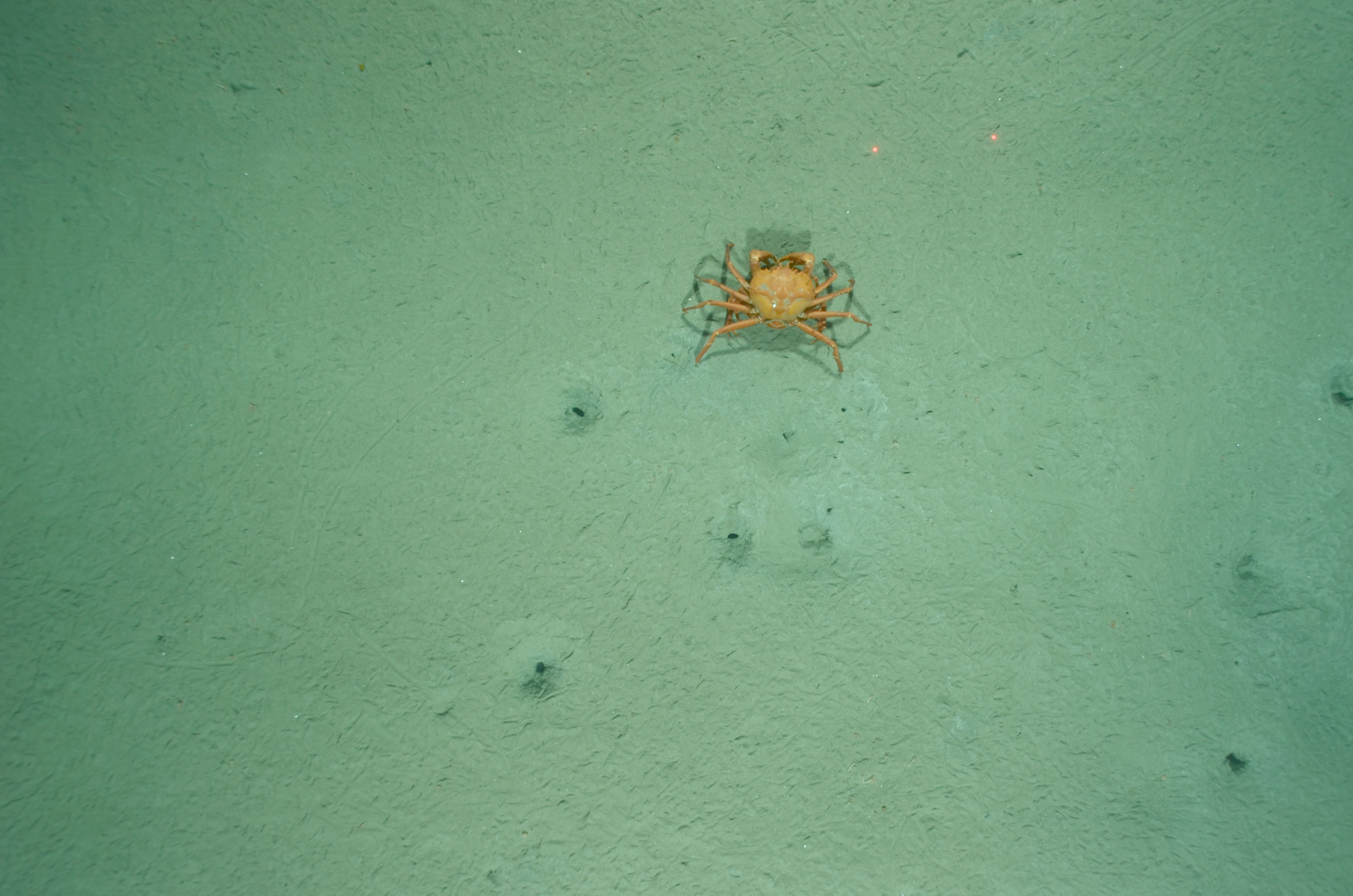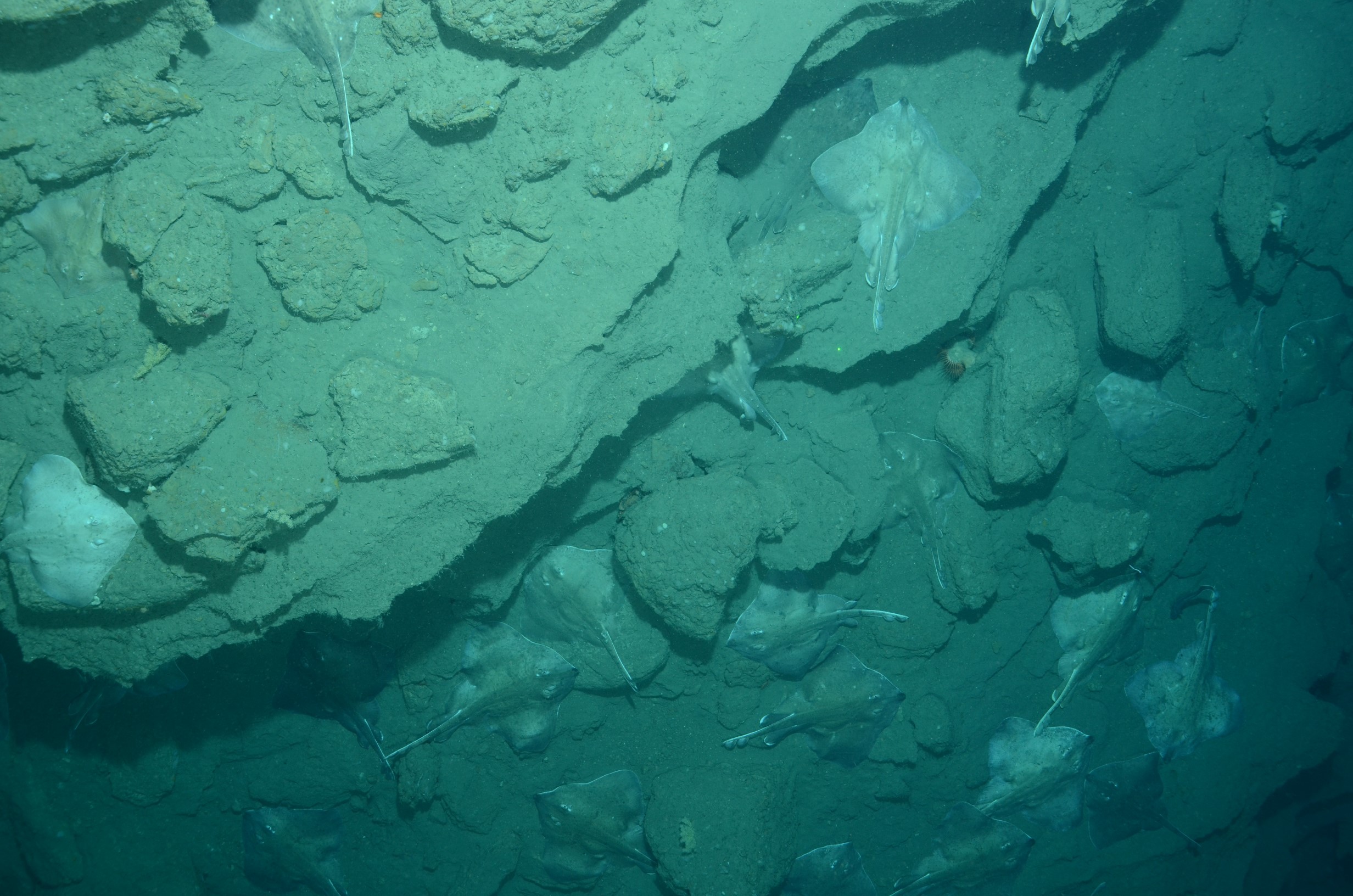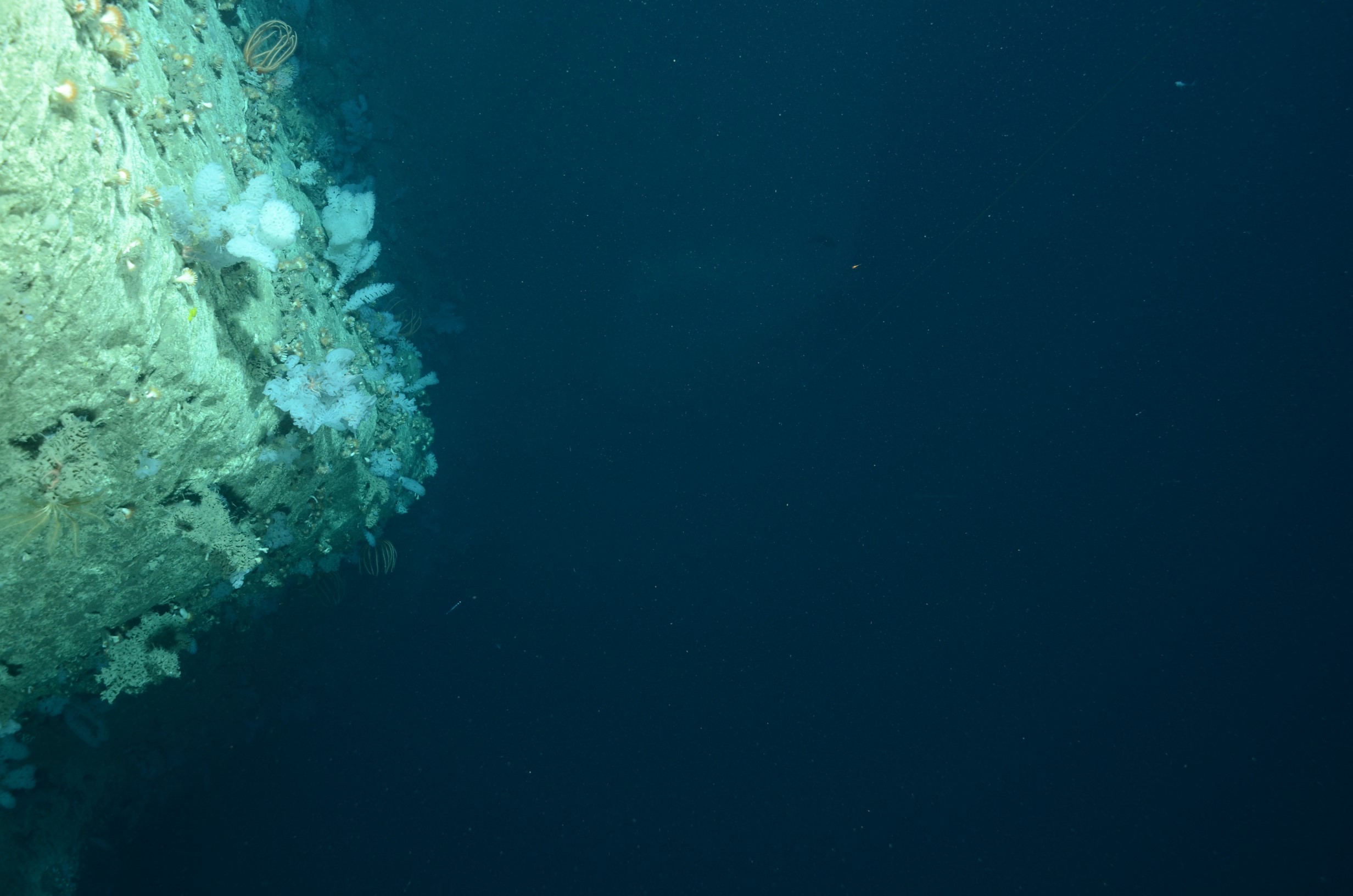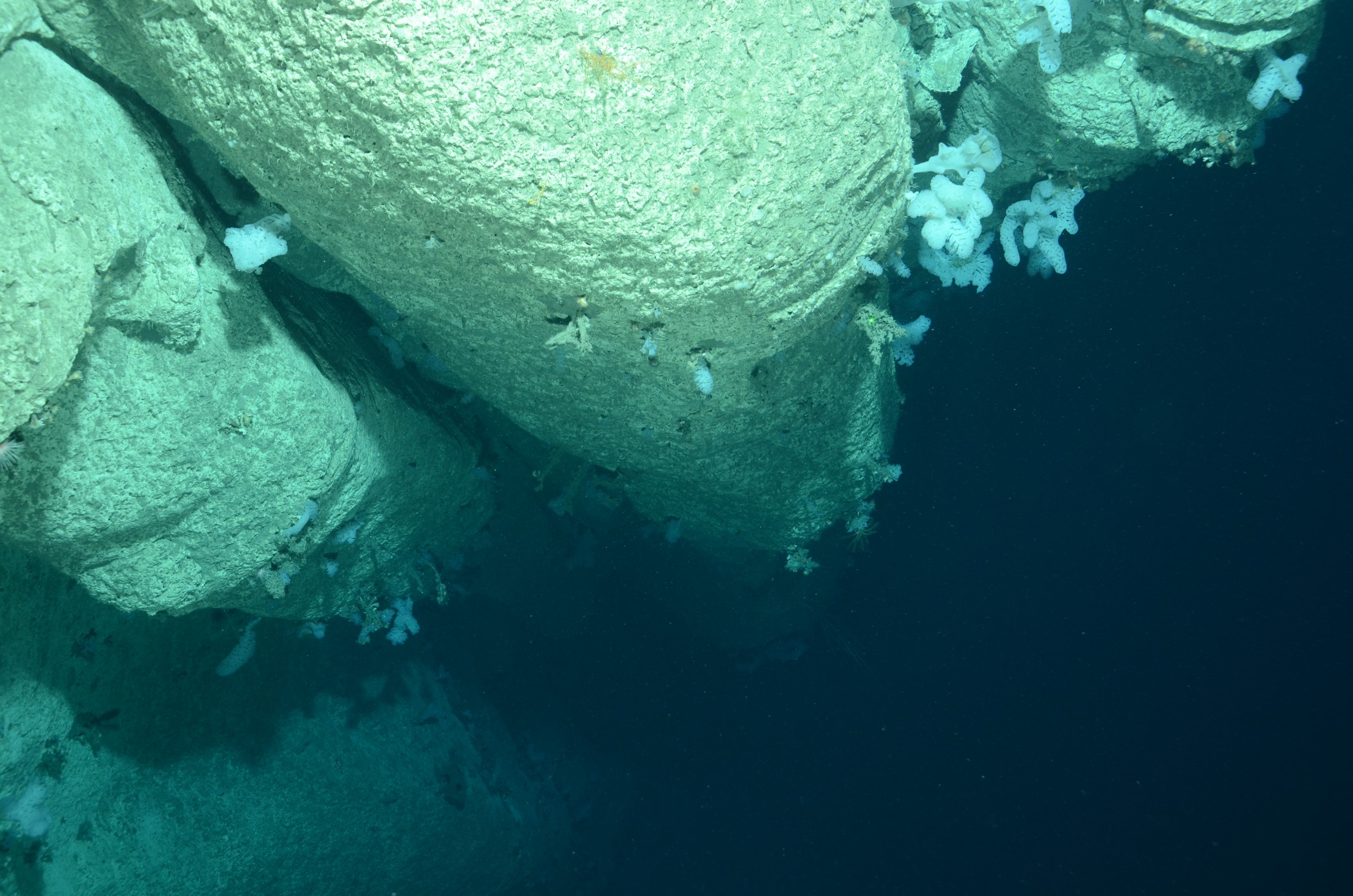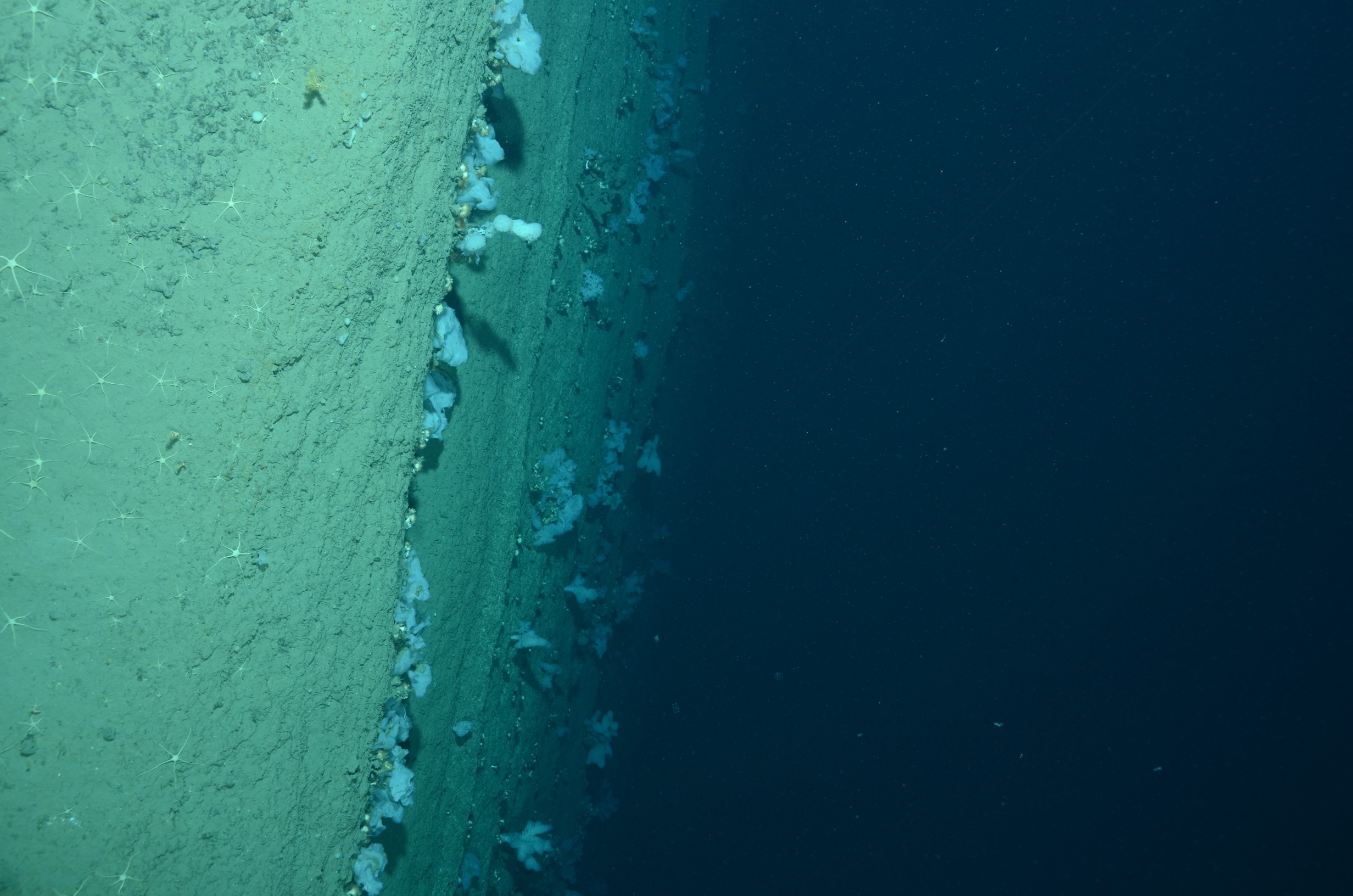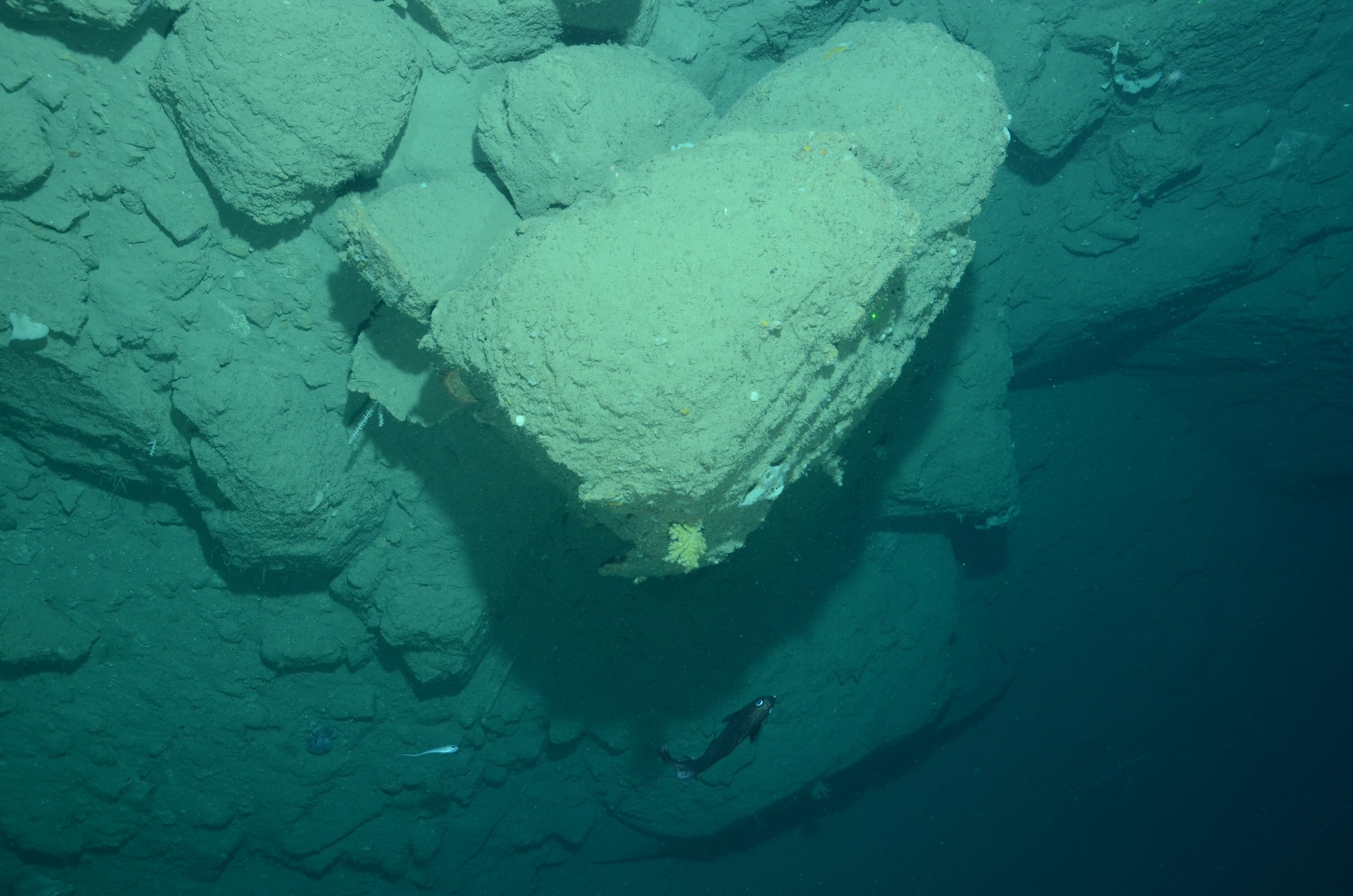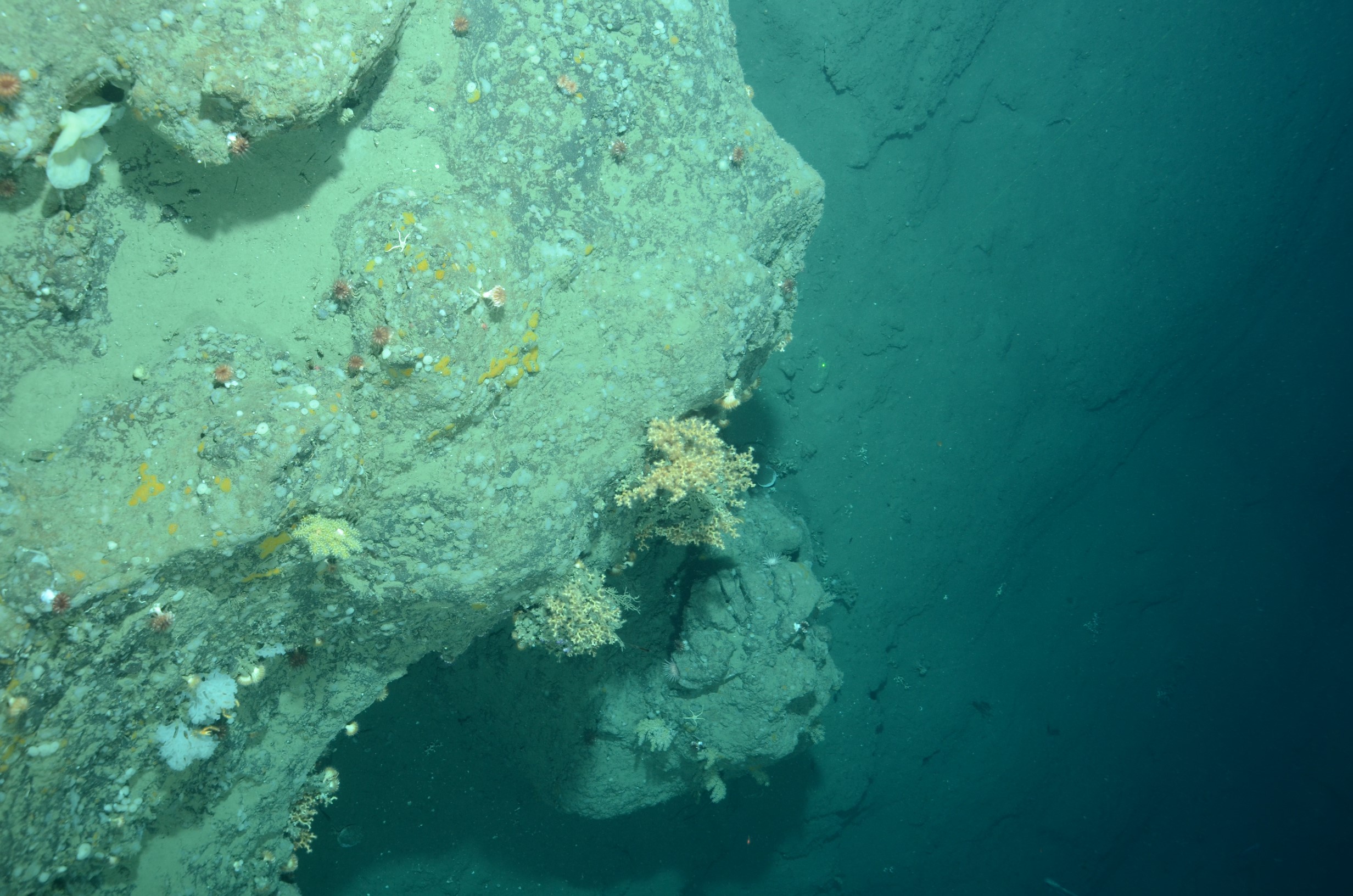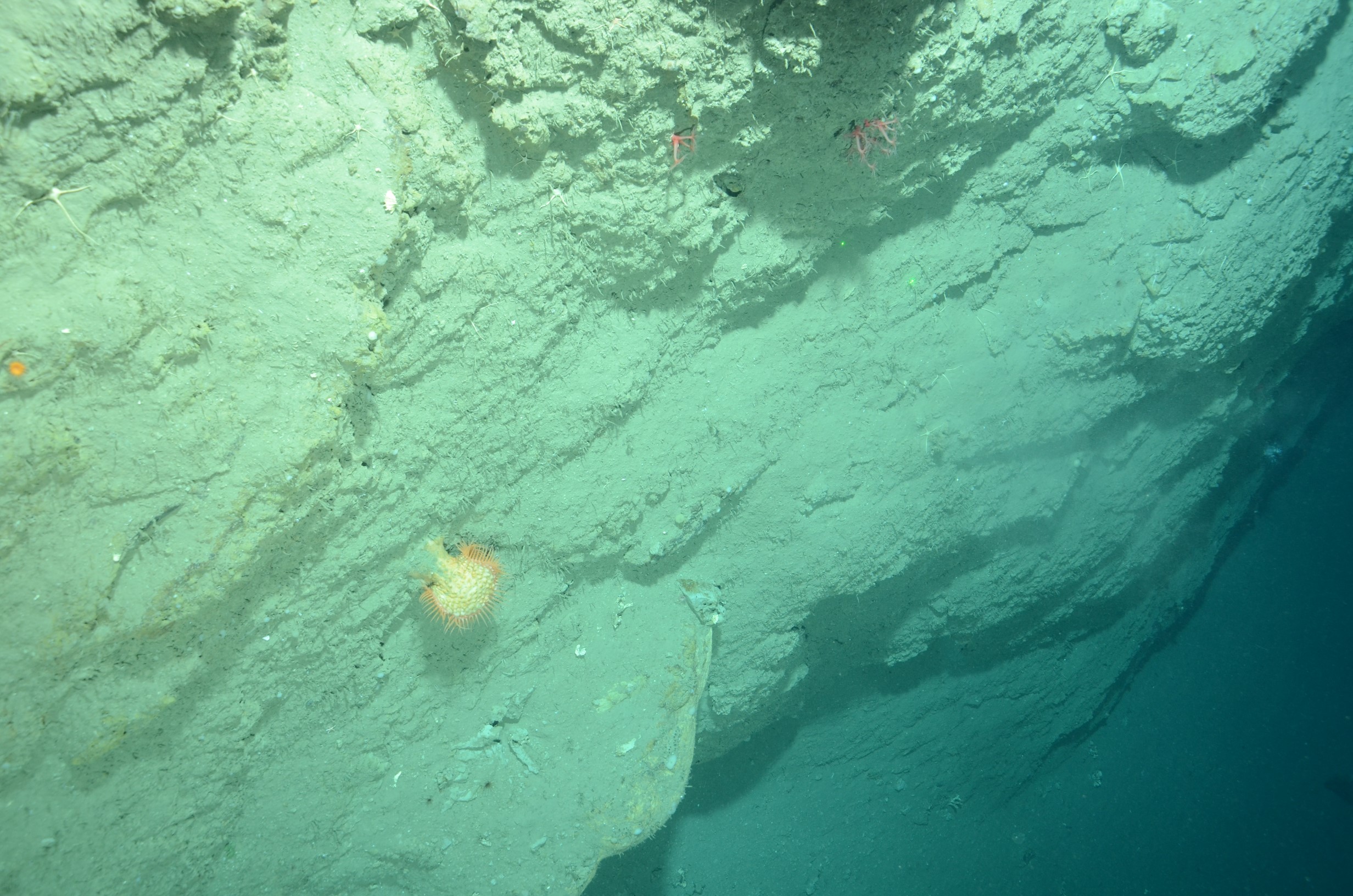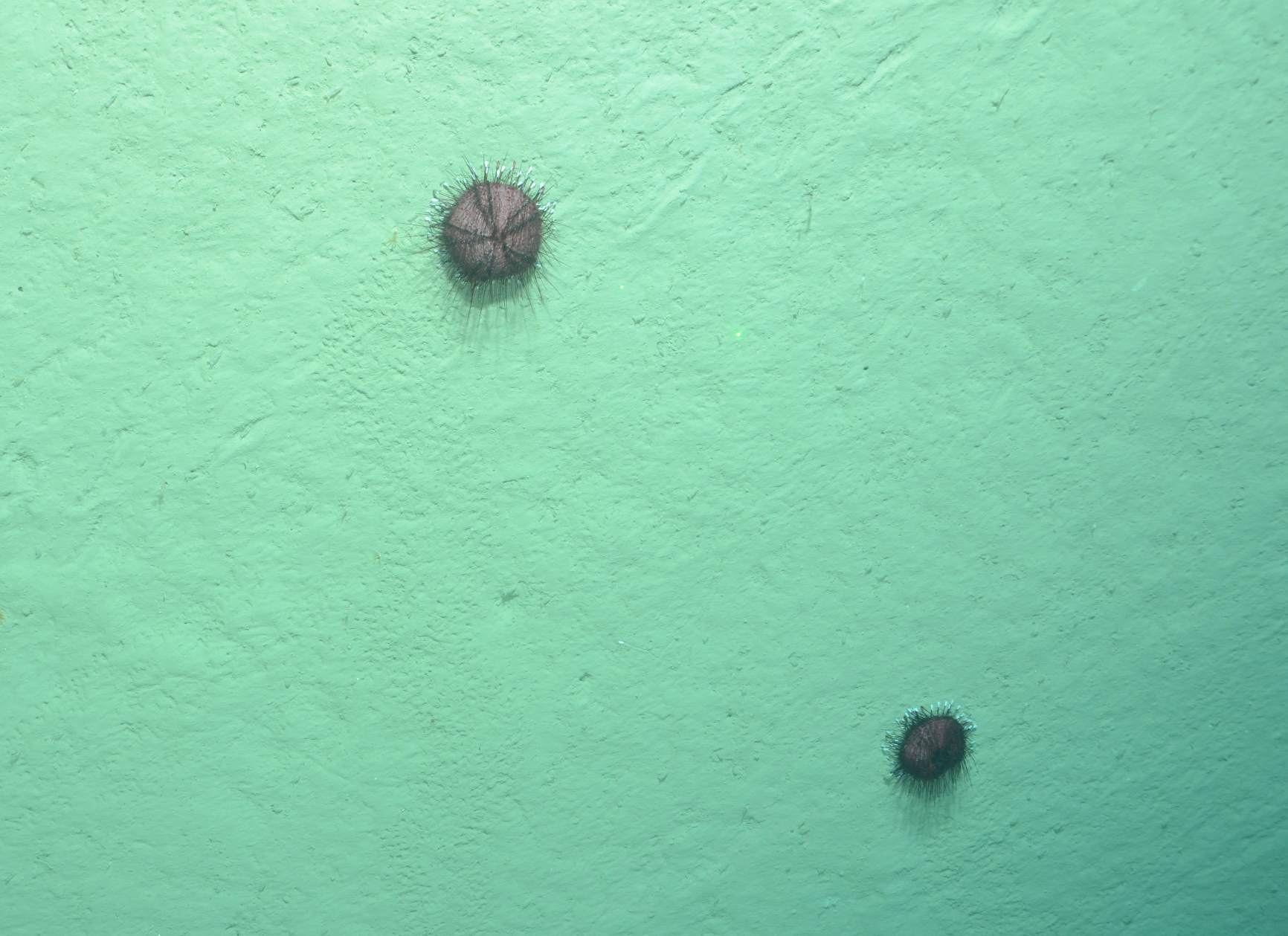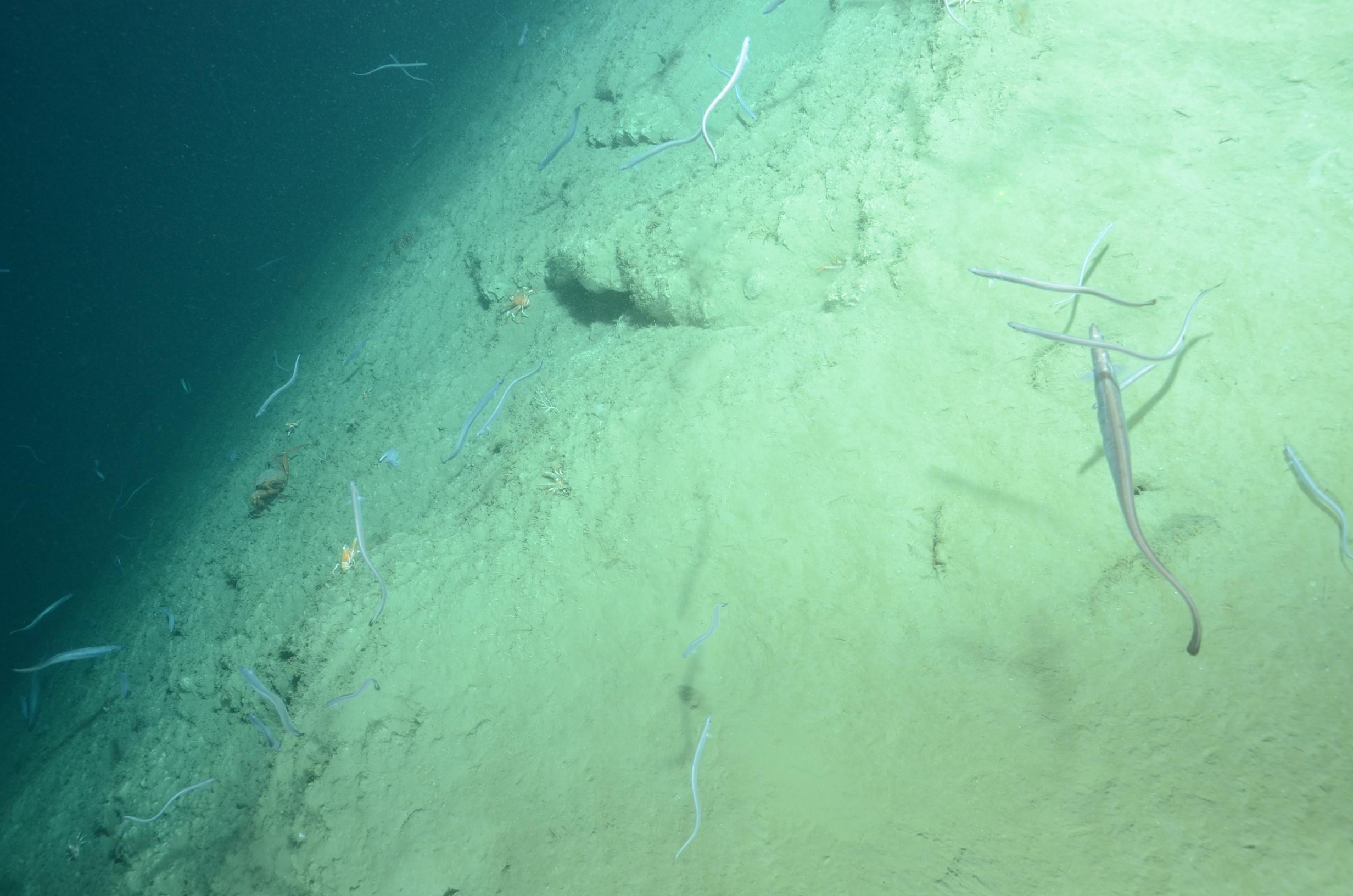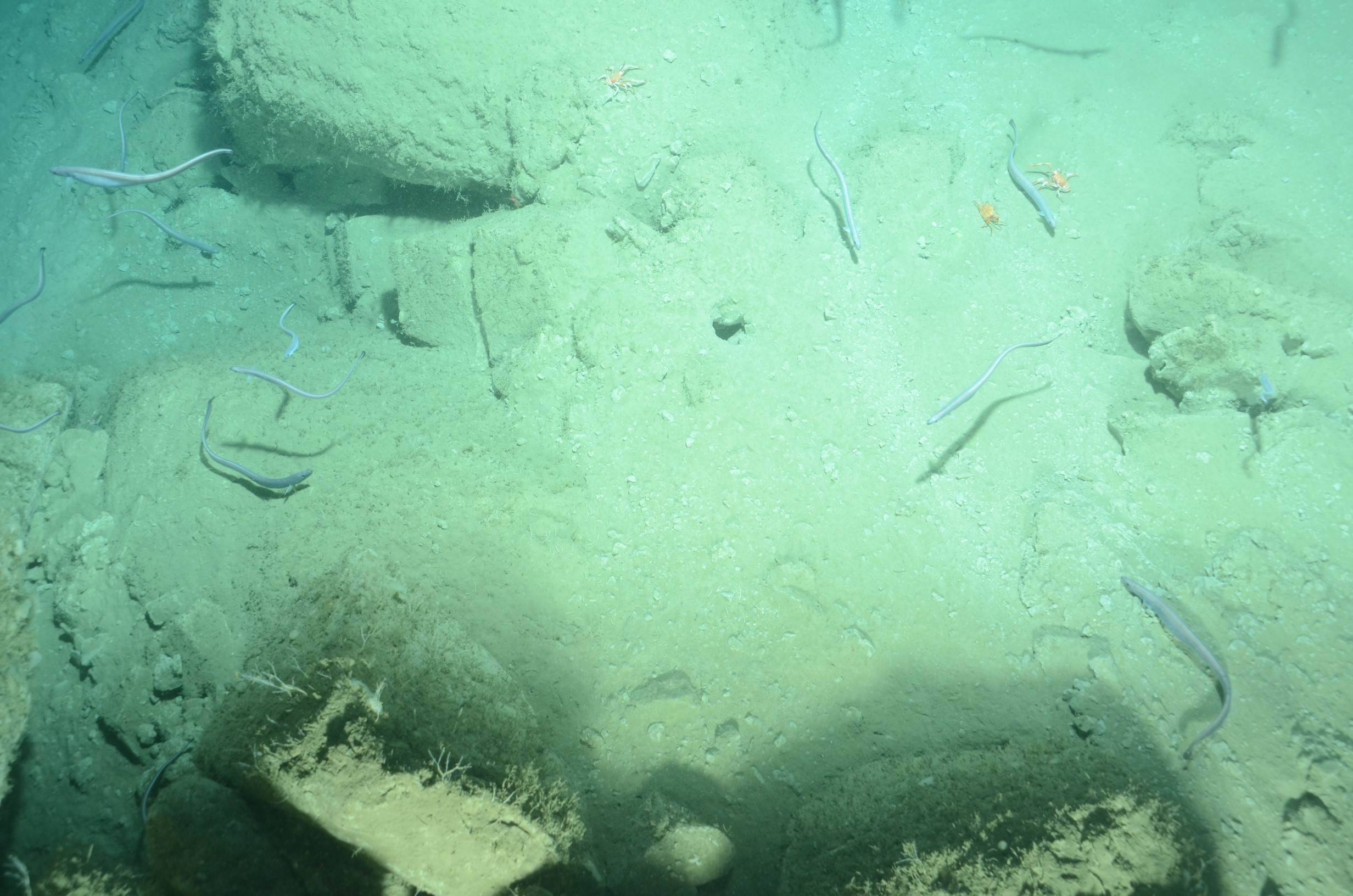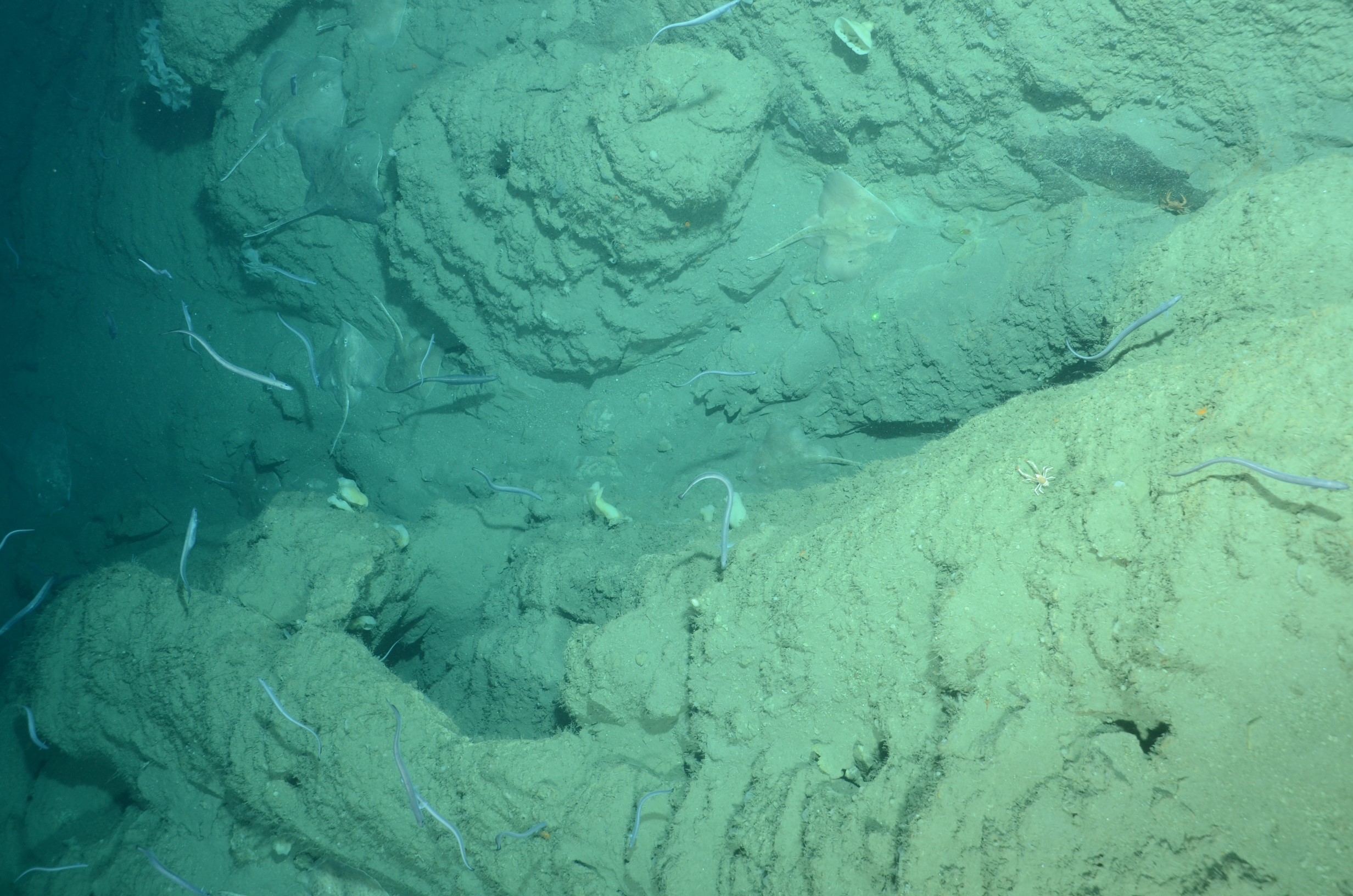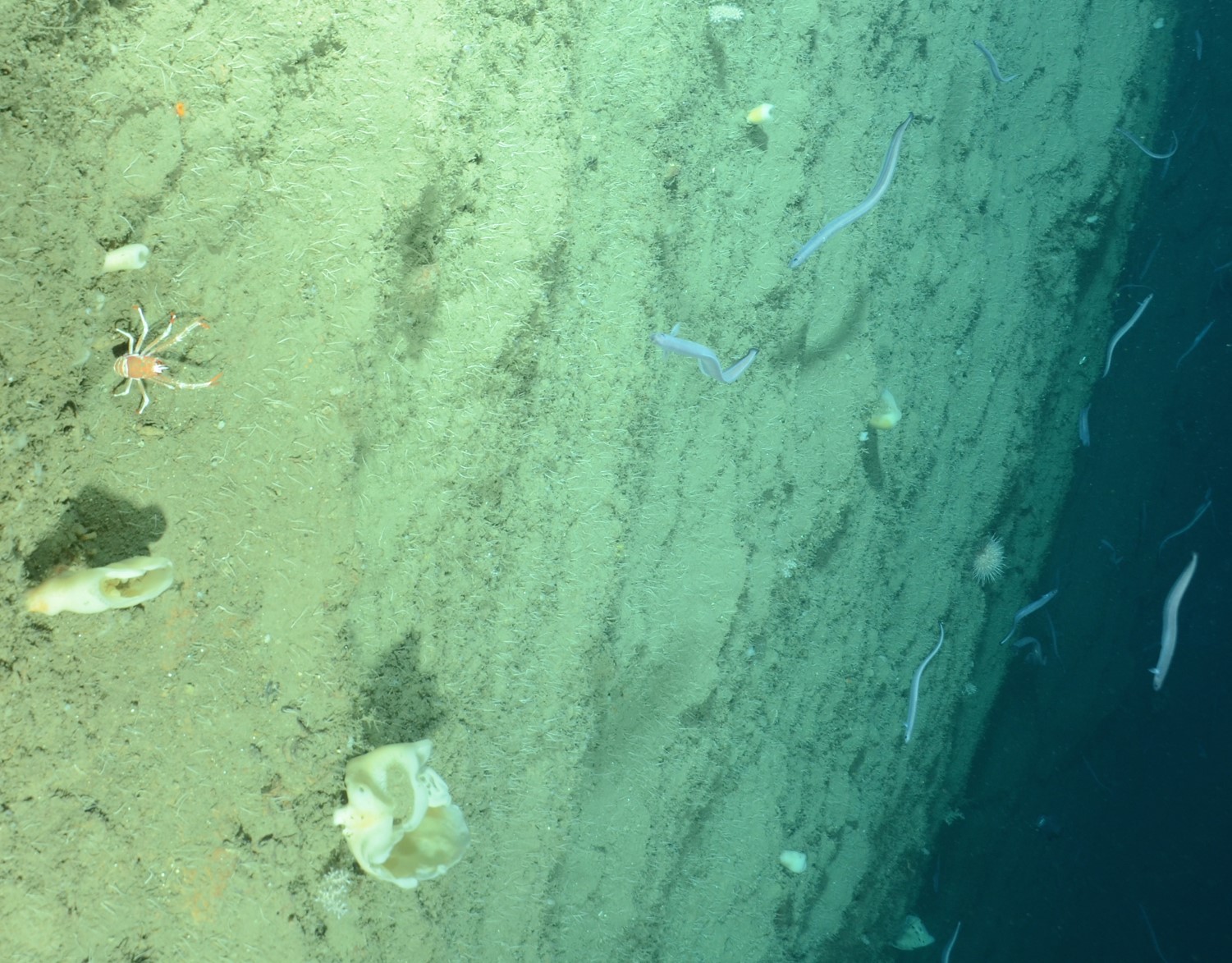PHOTO GALLERY
Mid-Atlantic Canyons
Though near to some of the busiest ports and coastal waters in the world, the deep-sea canyons of the Mid-Atlantic Ocean are little-explored. Over the last few decades, scientists have discovered that these mysterious marine canyons are home to an impressive array of corals, sponges and fishes. A team of scientists from the Woods Hole Oceanographic Institute recently used a ship tethered digital camera system to document marine life in the canyons in collaboration with the Deep Sea Coral Research and Technology Program, NOAA Fisheries Service, the National Centers for Coastal Ocean Science, the National Ocean Service and MARCO.
Scroll down for a glimpse at some of the marine life and exotic scenery captured by the team in the the Ryan, Carteret, Lindenkohl, Spencer, Washington, Wilmington, Leonard and Accomac canyons. Click on any image to view it at a larger size. Read more about the team’s findings in this report.
A vertical margin near 840 meters with several species of fish, crabs and sponges in Wilmington Canyon
026 A vertical margin near 840 meters with several species of fish, crabs and sponges in Wilmington Canyon
Large assemblages of acanthogorgid-like corals on rocks at 500 meters in Wilmington Canyon. Note the white plastic bag entangled in the corals
Large assemblages of acanthogorgid-like corals on rocks at 500 meters in Wilmington Canyon. Note the white plastic bag entangled in the corals
Burrows and red crabs on sediment near 680 meters in Wilmington Canyon
Burrows and red crabs on sediment near 680 meters in Wilmington Canyon
A benthic octopus moves along the seafloor in Wilmington Canyon
A benthic octopus moves along the seafloor in Wilmington Canyon
A wall laden with solitary scleractinian (cup) corals and sponges in Wilmington Canyon
A wall laden with solitary scleractinian (cup) corals and sponges in Wilmington Canyon
Red ‘rockfish’ along the hard bottom at 400 meters in Wilmington Canyon
Red ‘rockfish’ along the hard bottom at 400 meters in Wilmington Canyon
Clusters of paragorgid and acanthogorgid-like corals dominate near 510 meters deep in Wilmington Canyon
Clusters of paragorgid and acanthogorgid-like corals dominate near 510 meters deep in Wilmington Canyon Credit: NOAA Office of Ocean Exploration and Research
Hake, red crabs, sponge and galatheid crabs using seafloor micro-relief in Washington Canyon
Hake, red crabs, sponge and galatheid crabs using seafloor micro-relief in Washington Canyon
Areas of higher relief in the Washington Canyon with galatheid crabs, eels and red crabs
Areas of higher relief in the Washington Canyon with galatheid crabs, eels and red crabs
Example of a vertical wall in Spencer Canyon with little attached fauna
Example of a vertical wall in Spencer Canyon with little attached fauna
Solitary cup corals, hexactinellid sponges and pink sea urchins on a vertical wall in Spencer Canyon
Solitary cup corals, hexactinellid sponges and pink sea urchins on a vertical wall in Spencer Canyon
An orange venus fly trap anemone, red fish and many eels in a boulder habitat in Spencer Canyon
An orange venus fly trap anemone, red fish and many eels in a boulder habitat in Spencer Canyon
Acanthagorgia, clavularia and white sponges in Spencer Canyon
Acanthagorgia, clavularia and white sponges in Spencer Canyon
Rocky ledges on portions of vertical walls in Lindenkohl Canyon create habitat for skates
Rocky ledges on portions of vertical walls in Lindenkohl Canyon create habitat for skates
Rocky overhang with large aggregates of sponges and cup corals in Lindenkohl Canyon
Rocky overhang with large aggregates of sponges and cup corals in Lindenkohl Canyon
Representative diversity at this depth with cup corals, black corals, hexactinellid sponges and zoanthid covering soft corals in Lindenkohl Canyon
Representative diversity at this depth with cup corals, black corals, hexactinellid sponges and zoanthid covering soft corals in Lindenkohl Canyon
A field of white hexactinellid sponges and solitary cup corals on a vertical wall in Lindenkohl Canyon
A field of white hexactinellid sponges and solitary cup corals on a vertical wall in Lindenkohl Canyon
Large boulders create habitat for acanthagorgia and bamboo corals, white sponges, urchins and octopus in Lindenkohl Canyon
Large boulders create habitat for acanthagorgia and bamboo corals, white sponges, urchins and octopus in Lindenkohl Canyon
Rocky outcrop with hard corals (including scleratinian and solitary cup corals) and soft corals, white and encrusting sponges in Lindenkohl Canyon
Rocky outcrop with hard corals (including scleratinian and solitary cup corals) and soft corals, white and encrusting sponges in Lindenkohl Canyon
A venus-fly trap anemone on the Leonard Canyon wall
A venus-fly trap anemone on the Leonard Canyon wall
Hygrosomid-like purple urchins on soft sediment in Leonard Canyon
Hygrosomid-like purple urchins on soft sediment in Leonard Canyon
Red crabs, galatheid crabs and a high abundance of cutthroat eels in Carteret Canyon
Red crabs, galatheid crabs and a high abundance of cutthroat eels in Carteret Canyon
Hydrozoan-encrusted outcrop rocks surrounded by cutthroat eels and crabs in Carteret Canyon
Hydrozoan-encrusted outcrop rocks surrounded by cutthroat eels and crabs in Carteret Canyon
Eels, red crabs and galatheid crabs in abundance in a vertical rock habitat in Accomac Canyon
Eels, red crabs and galatheid crabs in abundance in a vertical rock habitat in Accomac Canyon
Additional Resources
- Report: Deep-water coral and fish of U.S. Mid-Atlantic Canyons
- MARCO Portal Ocean Stories Feature: Tales from the Mid-Atlantic Canyons
- Story map: Exploring the Unexplored: Deep-Sea Canyons of the Mid-Atlantic
- Download zip file containing spreadsheets with points data for coral observations

